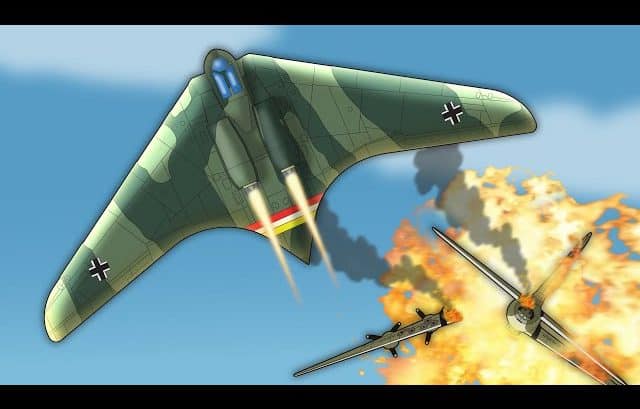During the Battle of Britain, although destroying 7 aircraft, Nazi ace and engineer, Walter Horten was still unhappy. Lesser talented pilots under his command were being taken down by the dreaded British Spitfire.
Futuristic Fighter
It was at this moment that Horton decided to create a futuristic fighter that he had been dreaming of since the early 1930s, one he envisioned to be superior to the Spitfire in every aspect, and he was convinced had the potential to win the war the Horton-Ho 229.
Development
Determined that an all-wing plane could match the Spitfire, in May 1941, Walter determined whether German-produced aircraft could produce equal performance to the Allied fleet.
Secret Project
Anticipating that an aerodynamically efficient all-wing aircraft combined with the experimental jet engine could become one of the fastest machines to ever graze the skies, Walter and his brother Reimar initiated an unauthorized project that he called Saunder Commando Unit 3.
Its main goal was rivaling the officially sanctioned Messerschmith Me-262 program. He was aware that a court-martial, even execution would follow if he was discovered squandering the Air Force’s resources.
Reveal
With the work carried out in secret for the next two years, they were able to reveal their planes after Hitler’s second in command Hermann Gehring disappointed with the Luftwaffe’s staggering losses.
Ho 229
Developed in the late stage of WWII, the Ho 229 was a German prototype fighter bomber that became the first flying wing to be powered by jet engines. In April 1945, however, capturing the Guta workshops of the US Army, the H0-229 and its many planned variants were permanently discontinued as Allied forces marched in Berlin.
Finishing with a top speed of 950 kilometers per hour, the plane however, would never exceed the 1,000 mark.



